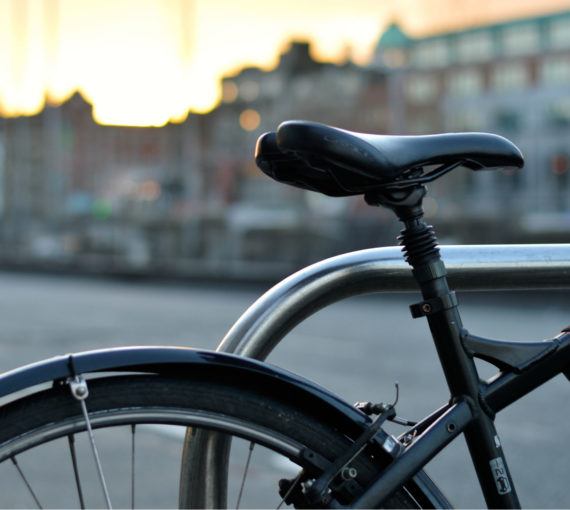Toronto loves its bike lanes, so why aren’t we investing in them like other cities?
Polling done by Ekos Research in 2018 found 82% of Torontonians endorse the city’s protected bike lanes. This support is not confined to the downtown. Ekos found three out of four Scarborough residents back bike lanes.
Nor is enthusiasm for the lanes confined to cyclists. Ekos found 75% of people whose main mode of transport is the car endorse the lanes.
Ekos also asked Torontonians if they want the cycling network completed according to the current timeline or if it should be sped up. Sixty-five per cent of residents — nearly two out of three — favoured an accelerated pace.
What’s the appropriate level of spending? One way to answer the question is by looking at what other cities spend.
The lanes do more than protect bike-riders. They also benefit drivers.
Take Montreal. That city dedicates about $16.6 million a year to cycle paths. This amount may sound familiar. It’s approximately what Toronto has committed annually for its cycling network. But here’s the catch: We have a million more inhabitants than Montreal.
That means Toronto’s per capita spending is far lower: about $6 per resident versus more than $9. Making our per capita spending the same as that of our Quebec friends would put Toronto’s commitment to bike lanes at approximately $25 million annually.
At that level we could complete our cycling network far sooner — in about six years rather than 10 — while improving road safety and potentially saving lives. We don’t need to outdo Montreal or race past the city, but at the very least we should match it, which means giving bike lanes just $9 a year per Toronto resident.
Are bike lanes an urgent priority? They’re a key component of Vision Zero, the city’s plan to eliminate road-related injuries and death. And the lanes do more than protect bike-riders. They also benefit drivers.
For a tiny fraction of what we spend on subway stations, we can move thousands of Torontonians on cycle tracks.
Research done on Bloor found that, following installation of protected lanes, far more motorists felt comfortable driving beside cyclists. Perhaps this explains why support for bike lanes stands at 75% among those who rely on the car.
Bike lanes make a lot of economic sense. The Richmond and Adelaide lanes — which city council wisely voted to make permanent — were installed for just $780,000. These lanes now boast over 6,000 cyclists per day — more people than use some subway stations, such as Downsview Park (2,500 daily riders) or Highway 407 (3,400 daily riders). For a tiny fraction of what we spend on subway stations, we can move thousands of Torontonians on cycle tracks.
Now that’s cost-effective.
By slightly increasing our per-capita bike-lane spending so it matches that of Montreal, Toronto would be fulfilling its Vision Zero commitments more quickly and helping to reduce grievous injury and death on our roadways. It would also be satisfying the expectations of the majority of residents who want the cycling network built sooner. It’s time for the city to deliver.
This op-ed was originally published by Urbanized.
Our work
Always grounded in sound evidence, the David Suzuki Foundation empowers people to take action in their communities on the environmental challenges we collectively face.




